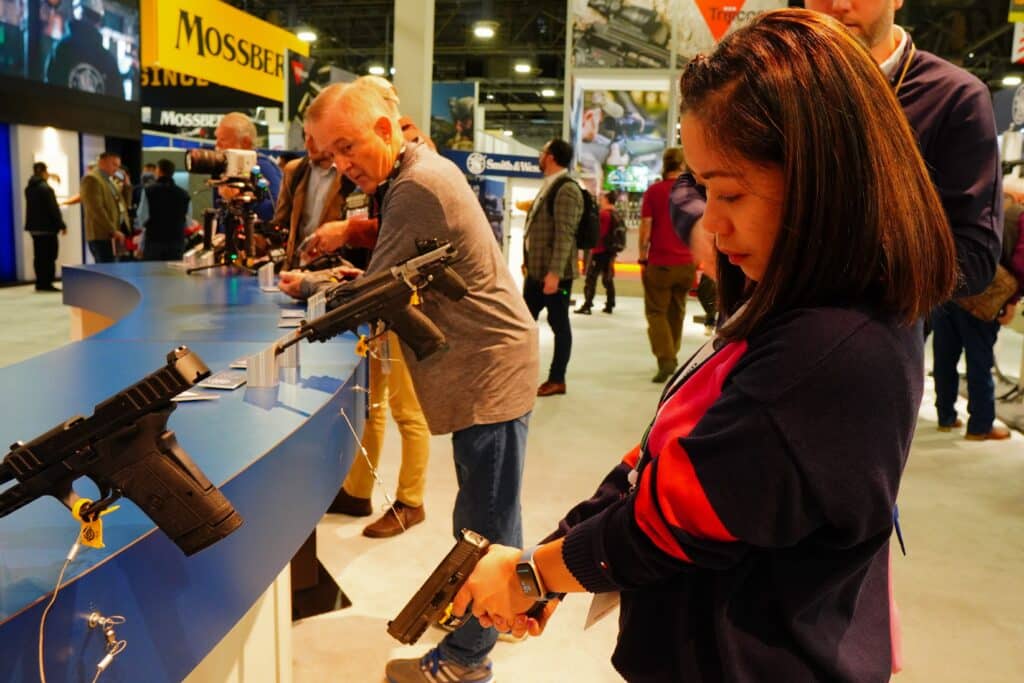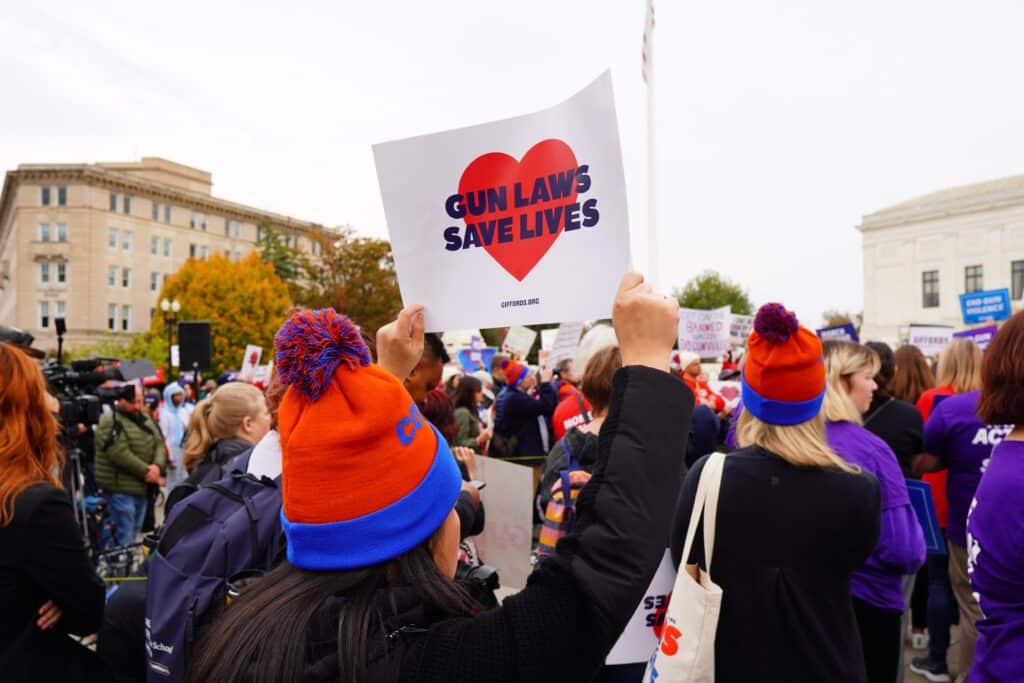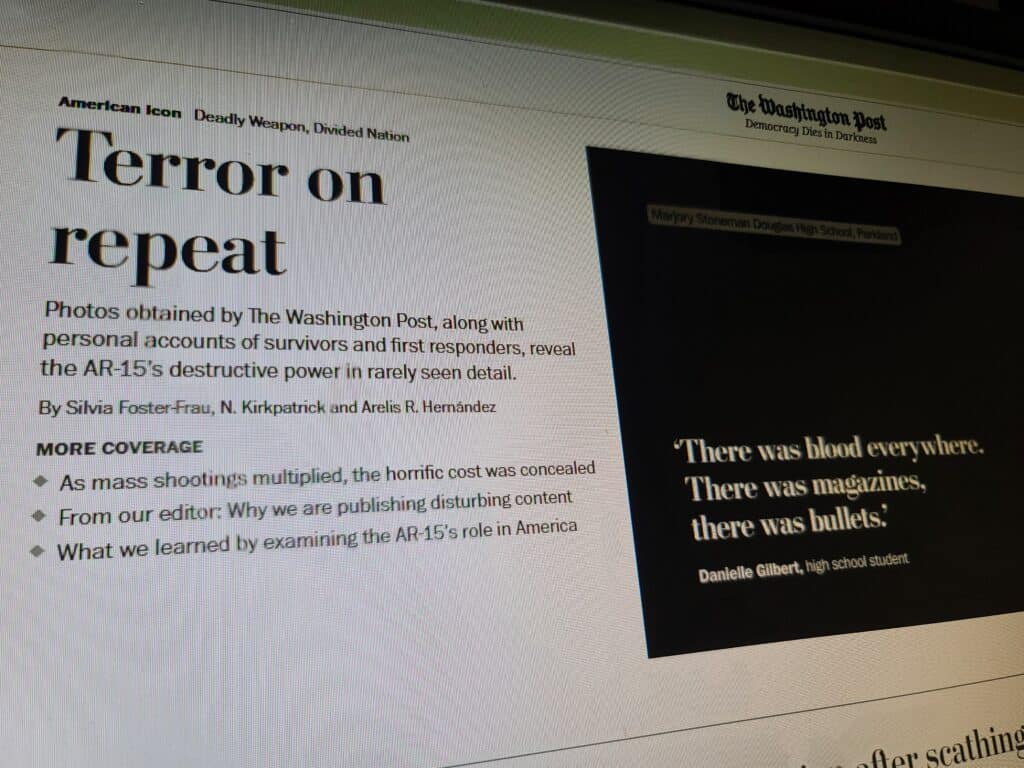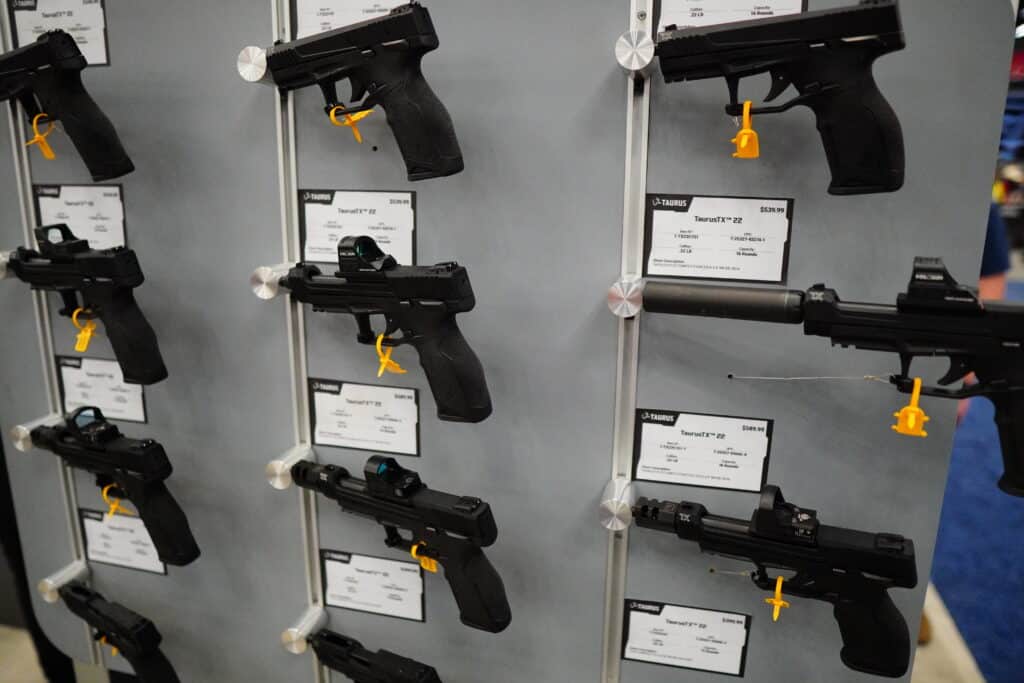The federal courts were busy again this week. But one decision in particular stood out.
In Colorado, a Jimmy Carter appointee upheld the state’s three-day waiting period for gun purchases. And he did so using a fairly unique, fairly thin argument. But I explain in a piece for members how this “one weird trick” to getting around the Bruen test has come up before.
The Washington Post made the controversial decision to publish a series of graphic pictures of mass shootings this week. I explain why I think that decision was wrong, and how the way The Post went about doing it was even worse.
We also have an update on the civilian demand for guns in Israel after the October 7th attacks. That demand has continued to skyrocket even since we reported there were 150,000 permit applications just a few weeks ago.
The other significant court ruling from this week dealt with the application of the felon gun ban to another non-violent offender. A federal judge found a Pennsylvania man can’t be barred from owning guns for life over his DUI convictions.
Plus, Contributing Writer Jake Fogleman also takes a close look at oral arguments in the Supreme Court’s Rahimi case and what outcomes they might point to. And Second Amendment scholar David Kopel joins the podcast to give his insight into the case.

Federal Judge Upholds Colorado Gun Purchase Waiting Period
By Jake Fogleman
The right to keep and bear arms does not include a right to acquire guns through commercial sales, a federal judge ruled Monday.
U.S. District Judge John L. Kane, a Jimmy Carter appointee, denied a request by gun-rights advocates to have Colorado’s three-day waiting period law for gun sales enjoined. He ruled the Second Amendment doesn’t cover sales.
“After examining the language of the Second Amendment using the Supreme Court’s analysis in Heller, I find, for the purposes of Plaintiffs’ Motion, that the plain text does not cover the waiting period required by the Act,” Judge Kane wrote in RMGO v. Polis. “This conclusion is bolstered by the fact that the Act is a regulation on the commercial sale of firearms and thus is presumptively permissible.”
Click here to continue reading.

Analysis: ‘One Weird Trick’ to Uphold Gun Restrictions Returns to Federal Court [Member Exclusive]
By Stephen Gutowski
A particularly flimsy legal theory has reappeared in federal Second Amendment litigation.
On Monday, US District Judge John L. Kane upheld Colorado’s three-day waiting period for gun purchases. He ruled the sales restriction didn’t violate the Second Amendment. His reasoning? The Second Amendment doesn’t actually protect gun sales at all.
“After examining the language of the Second Amendment using the Supreme Court’s analysis in Heller, I find, for the purposes of Plaintiffs’ Motion, that the plain text does not cover the waiting period required by the Act,” he wrote in Rocky Mountain Gun Owners v. Polis. “This conclusion is bolstered by the fact that the Act is a regulation on the commercial sale of firearms and thus is presumptively permissible.”
If you’re a Reload Member, click here to read the rest. If not, buy a membership today for exclusive access!

Analysis: The Washington Post’s Problematic Approach to Publishing Gory Mass Murder Photos
By Stephen Gutowski
There are many problems with The Washington Post’s decision to publish gory scenes of mass murder.
On Thursday, The Washington Post published a piece titled “Terror on Repeat: A rare look at the devastation caused by AR-15 shootings,” which features a number of graphic pictures of the aftermath of a select number of mass killings. We aren’t going to link to it here, but it is in front of the publication’s paywall and on the front page of their website. So, it isn’t hard to find.
The images are as awful as you’d expect. They feature the bloody aftermath of at least 11 mass killings. One features body bags lining the hallway of Robb Elementary School in Uvalde, Texas. Another shows a Las Vegas field strewn with uncovered dead bodies. They certainly show how horrendous mass murder can be.
Sally Buzbee, the paper’s editor, justified publishing the pictures with the claim that most Americans don’t understand the violence of attacks carried out by somebody with an AR.
Click here to read the full analysis.

Number of Israelis Seeking Gun Permits Passes 230,000
By Jake Fogleman
More Israeli citizens have applied for firearms licenses in the last month than in the previous 20 years, according to an Israeli government official.
National Security Minister Itamar Ben Gvir announced on Wednesday that his ministry has received more than 236,000 new applications for firearms licenses since October 7th. Of those received applications, he said 31,048 conditional permits for private weapons have already been issued.
“18,000 citizens have already exercised the permit and purchased a gun,” Ben Gvir said in a statement, according to a Google translation. “This is an increase of thousands of percent compared to previous years.”

Federal Judge Rules DUIs Can’t Result in Lifetime Gun Ban
By Stephen Gutowski
A history of drunk driving is not a good enough reason to permanently bar somebody from owning a firearm.
That’s the ruling US District Judge John Milton Younge handed down on Tuesday. He found the government violated the rights of plaintiff Edward Williams, a Pennsylvania man who was convicted of driving under the influence, when it disarmed him. He decided the law prohibiting felons from possessing guns was unconstitutional, as applied to Mr. Williams.
“[T]he Court finds that the Government has not carried its burden in proving that the United States’ tradition of firearm regulation supports stripping an individual of their right to possess a firearm because they had previously driven while intoxicated,” Judge Younge wrote in Williams v. Garland. “The application of Section 922(g)(1) to Plaintiff, therefore, constitutes a violation of his Second Amendment rights, and the Court finds that Plaintiff is entitled to the requested relief.”
Podcast: Gun Scholar David Kopel Explains SCOTUS Oral Arguments in Second Amendment Case
By Stephen Gutowski
The Supreme Court just finished oral arguments in its latest Second Amendment case. So, this week on the show, we’ve got scholar David Kopel with us to give his perspective on the arguments made and the questions asked by the Justices in United States v. Rahimi.
Plus, Contributing Writer Jake Fogleman and I discuss the massive upswing in Israeli civilian gun ownership after the October 7th attacks.
You can listen to the show on your favorite podcasting app or by clicking here. Video of the episode is also available on our YouTube channel.

Analysis: Reading the SCOTUS Tea Leaves in Rahimi [Member Exclusive]
By Jake Fogleman
The Supreme Court officially heard oral arguments in its latest big Second Amendment case on Tuesday. There were hints at which way they plan to come down on the future of the federal gun ban for domestic violence restraining orders.
Over the more than 90 minutes of back and forth between the nine justices and the attorneys on either side, it became clear that most of the Court was uncomfortable with the idea of Zackey Rahimi—who was found by a judge to pose a violent threat to his girlfriend and is accused of a string of other violent crimes—being allowed to possess a firearm.
“You don’t have any doubt that your client is a dangerous person, do you?” Chief Justice John Roberts asked Mr. Rahimi’s lawyer, J. Matthew Wright. After Wright questioned what the Chief Justice meant by “dangerous,” Roberts replied, “Well, it means someone who’s shooting, you know, at people. That’s a good start.”
While the rest of the arguments were more complicated and involved other legal questions than that one exchange, it nevertheless represented what turned out to be the defining theme of the day.
Even the Court’s more conservative justices, including Samuel Alito and Bruen-test author Clarence Thomas, offered little pushback on the Government’s desire to disarm specific categories of people aside from a few questions surrounding the procedural protections afforded through the common issuance of restraining orders.
The biggest question in Rahimi, then, does not appear to be whether the Supreme Court will overturn the Fifth Circuit’s ruling and uphold section 922(g)(8). Instead, the bigger question appears to be how the Court plans to do so and whether it will offer guidance on how other courts should evaluate other gun prohibitions moving forward.
If you’re a Reload Member, click here to read the rest. If not, buy a membership today for exclusive access to this and hundreds of other pieces!
Outside The Reload
‘Ghost Guns’ Rule Exceeds ATF Authority, Appeals Court Holds | Bloomberg Law | By Joyce E. Cutler
Where Gun Violence Is Plunging | Jeff-alytics | By Jeff Asher
U.S.-Style Gun Politics Are Spreading in Latin America | Americas Quarterly | By Nick Burns
That’s it for this week in guns.
I’ll see you all next week.
Thanks,
Stephen Gutowski
Founder
The Reload






